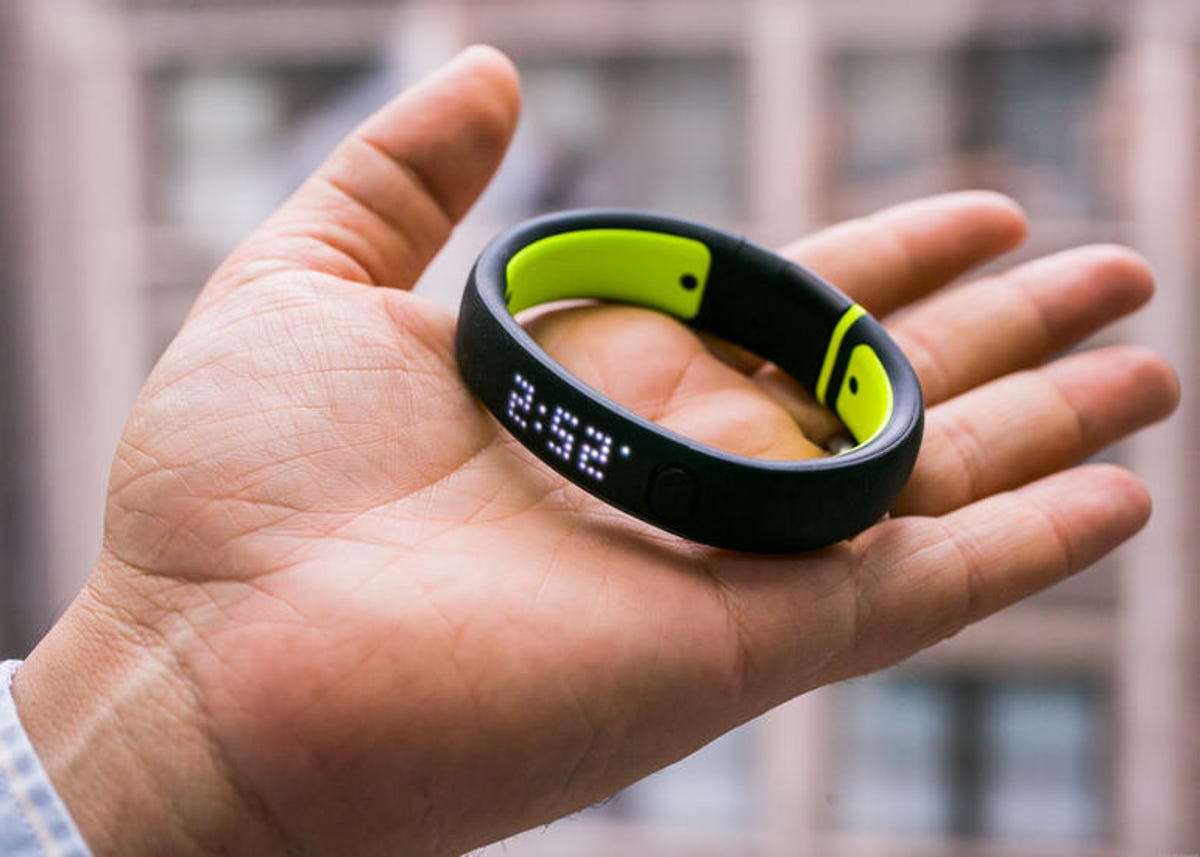
Sarah Tew/CNET
Nike has at long last brought its FuelBand application to Google’s Android mobile operating system, bridging a widening gap that has persisted for the entire two-year lifespan of the wrist-worn fitness tracker.
Android users with Galaxy S3, S4, and S5 phones, as well as Moto X, HTC One and Nexus 5 owners, can download the English-only app from the Play Store now in the US, Canada, Germany, and Japan. It’s compatible with Android 4.3 Jelly Bean and higher.
Related Stories
- Exclusive: Nike fires majority of FuelBand team, will stop making wearable hardware
- The end of fitness bands? Wearable tech feels ready to move forward
- Nike FuelBand — out of gas already?
- With FuelBand exit, Nike signals the limits of tech’s appeal
- Nike FuelBand’s wearable lesson not so clear-cut for Fitbit, Jawbone
The FuelBand is a device that relies on Bluetooth low energy to communicate with a user’s smartphone to track steps, burned calories, and the sportswear company’s proprietary workout metric, NikeFuel. However, in 2012 at the FuelBand’s launch, many Android handsets didn’t have Bluetooth LE. So Nike has kept support for the tracker restricted to iOS, earning the otherwise well-received device the ire of many Android users.
Nike confirmed last year that Android’s lack of universal support for Bluetooth LE was the reason why the FuelBand was kept off the platform. Nike’s Stefan Olander, VP of Digital Sport, also played down rumors that the sportswear company’s longstanding relationship with Apple — stretching back to 2006 with Nike+iPod — was the reasoning behind the exclusivity.
The decision to unceremoniously welcome Android in its FuelBand family from Nike comes at a trying time for Nike’s wearable efforts. Android support for the FuelBand comes as the rumor mill for Apple’s iWatch heats up, with a release tentatively slated for the fall, according to a recent New York Times profile of CEO Tim Cook.
That’s not to mention the more immediate threat: Google. The search giant’s wearable operating system, Android Wear, will be loaded on a slew of smartwatches . Among those devices are Motorola’s Moto 360 smartwatch and a bevy of competitors from Lenovo, Samsung, Fossil, and others that are expected to clash against the nascent fitness tracker market.
More important, however, is Nike’s significant organizational reshuffling with regard to wearables. In April, the company fired most of the engineering team responsible for development of wearable hardware at Digital Sport — just six months after the release of its second-generation FuelBand SE, as reported first by CNET. The goal was to move Nike’s technology focus away from expensive devices and toward its Nike+ app ecosystem. Though the company wouldn’t say definitively that it was exiting hardware development — Nike said new colors for the FuelBand were on the way — it did shelve a smaller FuelBand slated for release this fall.
Later in April, Nike CEO Mark Parker confirmed in an interview with CNBC that his company was indeed shifting away from hardware and toward software, adding fuel to the fire surrounding a rumored Apple-Nike partnership for the iWatch. “I will say that the relationship between Nike and Apple will continue. And I am personally, as we all are at Nike, very excited about what’s to come,” Parker said at the time.
Nike has made significant steps to retain its position in mobile fitness software with Nike+ — the company announced a San Francisco-based Fuel Lab that would act as a wearable incubator to get Nike software running on startups’ next-generation hardware. But clearly Nike still sees the FuelBand as a viable product until it’s pushed to irrelevancy by more polished offerings.
In June, it dropped the price of the FuelBand to $99 and delivered on the updated color claim with a World Cup-timed gold version of the FuelBand. That Nike is now finally adding Android support may be the last vestige of a product with a shortening window of shelf life as the wearable market makes room for the tech titans.



